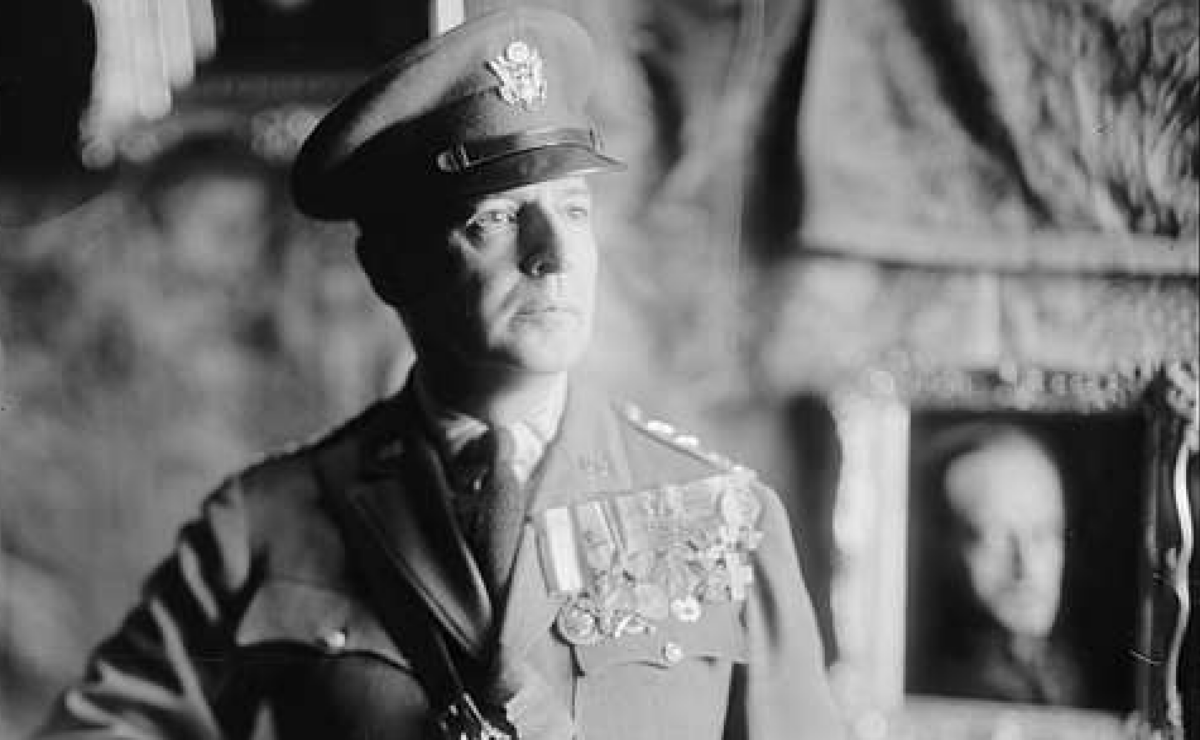April 5, 1964: The death of General Douglas MacArthur

General Douglas MacArthur / Photo from the Library of Congress
On April 5, 1964, General Douglas MacArthur died from kidney and liver diseases at the Walter Reed Army Medical Center on Georgia Ave. The general was 84 years old. He had been hospitalized for more than 30 days. At the time of his death, he was surrounded by his wife, Jean, and his son, Arthur.
Following his death, he was held in repose in New York City and at the United States Capitol rotunda in Washington, D.C. He was laid to rest at his memorial site in Norfolk, Virginia.
The MacArthur Memorial site was the former Norfolk City Hall. General MacArthur had never lived in Norfolk, but he had visited his mother’s family several times when he was young. He had fond memories of the area. He agreed to donate his papers, medals and many other items to the site. He stipulated that his wife, Jean, would join him at the memorial following her death.
General MacArthur had a long and fruitful relationship with the Philippines. He first arrived in the southern Philippines in 1903 as a junior engineering officer. He had just graduated number one in his class from West Point.
His next assignment was almost 20 years later as the head of the Military District of Manila. He eventually became the commanding officer of the Philippine Department, which was the highest US Army position in the Philippines.
You may like Jan. 15, 1914: The birth of Isabel Rosario Cooper, Gen. MacArthur’s lover
Following five years as the Army Chief of Staff, General MacArthur left the United States in 1935 to be the military advisor to the Philippine Commonwealth. He did not return to his home country until April 1951. He had served in the Philippines and Australia during World War II. He was the leader of the allied victory against Imperial Japan.
Following World War II, he was designated as the ruler of American-occupied Japan. He was given credit for promulgating the post-war Japanese constitution and for making significant structural and cultural changes in Japan.
When North Korea invaded South Korea in 1950, General MacArthur was appointed the position of commander of the United Nations troops in Korea. His decision to land at Inchon instead of Pusan (Busan) was brilliant. Unfortunately, he chose to dismiss the orders of the Joint Chiefs of Staff and the American president. He was fired by President Harry Truman in April 1951.
The firing of MacArthur was very controversial in the United States. Some thought that he should run for President in 1952. However, Dwight D. Eisenhower and Robert Taft received more votes in the Republican primary. MacArthur’s days in politics were over.
During a joint session of the US Congress on April 19, 1951, shortly after his firing, General MacArthur gave his farewell speech by stating that “old soldiers never die – they just fade away.”
Dennis Edward Flake is the author of three books on Philippine-American history. He is a Public Historian and a former park ranger in interpretation for the National Park Service at the Eisenhower National Historic Site in Gettysburg, PA. He can be contacted at: flakedennis@gmail.com

